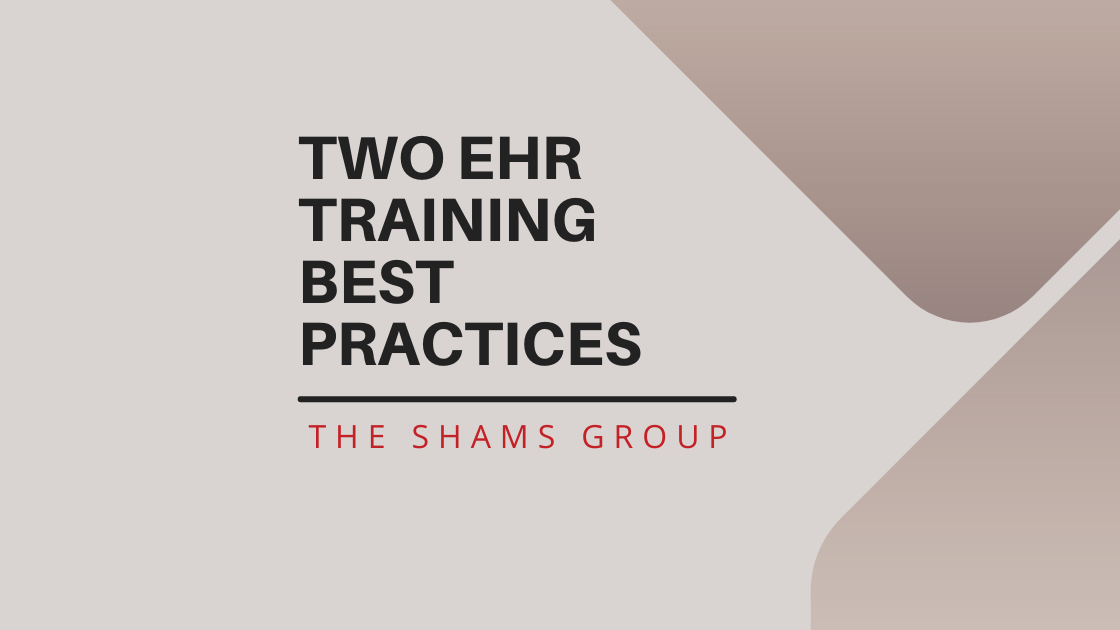Two EHR Training Best Practices
Implementing a new EHR is a massive undertaking that tests the endurance of all those involved – from board members and other executives to physicians and clinical support staff. Still, many are implementing some of the newest advancements in EHR technology – such as MEDITECH’s newest browser-based EHR, MEDITECH Expanse – because the benefits are simply worth the effort. Organizations miss out on reaping those benefits when implementation planners overlook or refuse to acknowledge the necessity of training.
Successful change management means organizations need to help staff accept, adjust to, and ultimately benefit from the implementation of a new EHR. Unsurprisingly, understanding how to use a new system is in large part what will enable most to do all three. So, how can you sure up your implementation plan and lead a successful transition? Here’s two best practices to consider when nailing down the training plan for your next EHR implementation project.
Too often, implementation planners end up treating training as an afterthought, hosting training sessions merely weeks before go-live or refusing to invest effort into developing a training plan at all.
Ensure Training is Relevant
One common misconception about training is that every employee needs to know every feature of a new EHR. The issue is that this is not practical for most practices, and attempting to do so could bring implementation to a crawl while creating greater frustration among staff. Training does best when it directly relates to the activities your staff will routinely encounter in their department.
Consider designing training sessions that reflect the roles and responsibilities of your staff. For example, you could create a class for the billing department that teaches users how to locate insurance information, verify billing codes, and submit an electronic claim.These are routine tasks that have enormous relevance and immediate application for employees in the financial department. However, the same would not be true for your clinical support staff, who need to understand how to view test results, merge patient charts, and enter a diagnosis.Tailor training sessions to get staff up to speed on the new EHR faster and keep confusion to a minimum.
To ensure training is relevant, it may also be necessary first to evaluate the levels of technological proficiency among your staff. For instance, some users may be able to internalize technical processes with relative ease, while others struggle to feel confident simply logging into a new application. A detail-oriented class may be immensely advantageous to the former, but a general computer class would be more appropriate for the latter. Knowing what training needs your staff has will help you create training plans that offer the best opportunity for everyone to succeed.
Don’t Skimp on Training
Too often, implementation planners end up treating training as an afterthought, hosting training sessions merely weeks before go-live or refusing to invest effort into developing a training plan at all. In most cases this is an enormous mistake that increases the likelihood of project setbacks, employee turnover, and lower overall rates of adoption.
To avoid this land mine of disappointment, planners need to make the education of their staff a priority and resist the temptation to push it off. It is ideal to start planning as early as possible and to extend training through go-live. This avoids situations where training is crammed into the last few weeks before implementation. At the same time, it also doesn’t allow for a large lapse of time between training and go-live that could cause everyone to forget what was learned.
To avoid this land mine of disappointment, planners need to make the education of their staff a priority and resist the temptation to push it off.
EHR training is a crucial aspect of implementation that organizations neglect to their own detriment. So, be willing to evaluate and then allocate the appropriate amount of time and resources to training, and create a culture around your EHR project that assures all new users they will succeed. By ensuring training is relevant and prioritized, you can help your organization take an adept next step in its digital transformation journey.
You Might Also Like:






